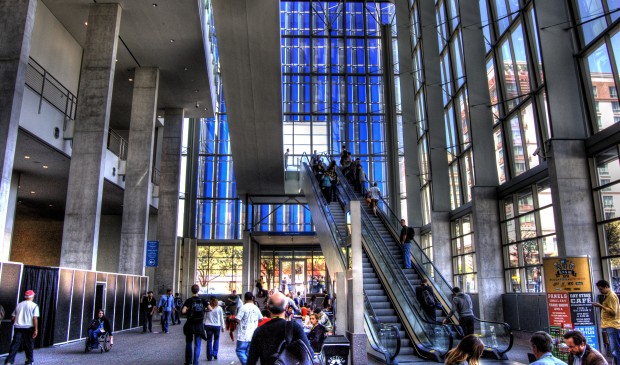Study weighs market impact of convention center expansion, predicts rebound from Covid-19
Thursday, August 20, 2020 by
Chad Swiatecki A new market analysis finds that the proposed expansion of the Austin Convention Center would bring more than 1,700 jobs to the city and add $306 million in annual economic impact from the local events and tourism industry.
The market viability study and planning update from HVS Convention, Sports & Entertainment Facilities Consulting of Chicago looked at the recent performance of the convention center relative to other peer cities and found that Austin is losing out on dozens – perhaps more than 100 – bookings a year because the facility lacks sufficient exhibition and meeting space.
City Council approved plans in 2018 for a two-phase expansion that would dramatically reconfigure the center and cost more than $1 billion.
The study also forecasts that the worldwide convention and meeting industry business is expected to return to normal and grow further following the end of the Covid-19 pandemic, with Austin expected to remain a sought-after destination. An expanded convention center could attract more than 800,000 attendees a year by 2033, with more than 200 events taking place throughout the facility yearly.
Representatives from the convention center are scheduled to make a presentation about the study to City Council at the Sept. 15 work session, with the Office of Real Estate Services putting together a negotiating agreement related to property acquisition that is expected to be voted on at the Sept. 17 meeting.
Mayor Steve Adler said moving forward with the expansion is necessary to help the local tourism industry rebound and drive growth of Hotel Occupancy Tax revenues that fund the expansion, convention center operations and a variety of cultural arts programs.
“I think that business will come back and I think cities will be competing for it because the ability to have money brought into your city from other people that don’t use city services and come in, spend their money and leave is a good thing,” he said.
The expansion and plan to reconfigure the streetscape around the convention center joins the Waterloo Greenway parks system, the Palm Park improvement and the proposed burial and capping of Interstate 35 as projects that will drastically transform the southeastern portion of downtown.
“The ability to use this as the prime place-making element for the southeastern quadrant of the city was not something I appreciated until the University of Texas did its design work,” Adler said. “To have the ability to take down part of the old convention center is huge, and to do it where someone else is taking the financial risk and we get to remake the place-making … that will be huge for the people that live here in 10 or 20 years.”
A series of previous studies of various impacts of the convention center’s expansion have all found that the project would have a pronounced effect on the local event and hotel economies. Voters also gave a thumbs-up of sorts to the project, defeating a 2018 ballot initiative that sought to limit the size of capital projects related to the facility that could take place without a public vote.
Catlin Whitington, chair of the city’s Tourism Commission, said the city should act quickly to acquire the property needed for the expansion, taking advantage of an expected slowdown in the real estate market due to the pandemic.
“Due diligence for a project like this is important and we’ve done it with an academic study from UT, an urban planning study from ULI and a bunch of financial planning assessments, an architectural study, and now we have a fifth study … they all come to the same conclusion,” he said. “It seems pretty clear that the need to move quickly is there and I would definitely agree. Moving on this now while we have a lull in the market and artificial dropout in values that allows us to marshal up whatever capital is available to start making waves – I am all for it.”
Council Member Kathie Tovo said her biggest questions about the expansion are related to the flexibility of the reconstructed center, and the availability of co-working and other spaces for businesses and community groups that could bring more everyday activity to the area. She also said she wants to keep the future of the Palm Park campus in mind during the remaking of that section of downtown.
The Austin Monitor’s work is made possible by donations from the community. Though our reporting covers donors from time to time, we are careful to keep business and editorial efforts separate while maintaining transparency. A complete list of donors is available here, and our code of ethics is explained here.
You're a community leader
And we’re honored you look to us for serious, in-depth news. You know a strong community needs local and dedicated watchdog reporting. We’re here for you and that won’t change. Now will you take the powerful next step and support our nonprofit news organization?










